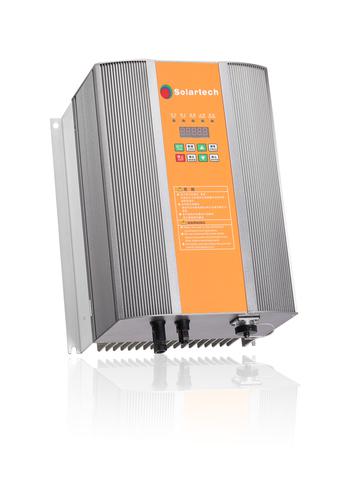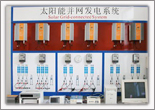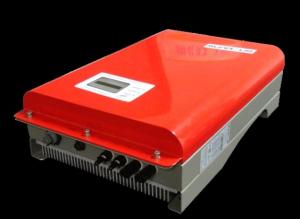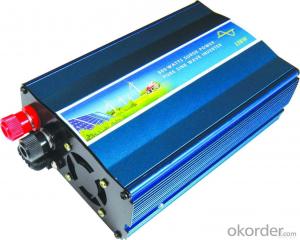Solar Inverter 7.5 Kw - Grid Tied Solar Inverters for Solar On Grid
- Loading Port:
- Shekou
- Payment Terms:
- TT or LC
- Min Order Qty:
- 20 unit
- Supply Capability:
- 800000 unit/month
OKorder Service Pledge
OKorder Financial Service
You Might Also Like
Solar On Grid Inverters, Grid Tied Solar Inverter
Products
Solar On Grid Inverter controls the whole system. Solar Inverters converts the DC current produced by the solar array into AC current, then the Solar On Grid Inverters transfers AC current to the grid, and adjusts the operation point in real-time according to the variation of sunshine to realize the maximum power point tracking (MPPT).
Success Stories
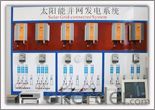
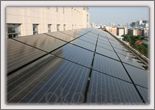
Technical Features
Adopting the dynamic VI MPPT method which has independent intellectual property; fast response and stable operation.A modified anti-islanding detection method can effectively shorten the detection time whilst keeping a high power quality, remove the obstacles to the grid, and suitable for a multi-inverter system.
Digital control with full automatic running, data storage and completely protective function.
Save the daily operating data automatically and consult the operating data for 8 years. It is convenient for statistics and analysis.
Dormancy function, save energy and reduce abrasion.
New design of anodized aluminum case; pretty appearance; perfect cooling and shielding.
Through optimization of the design, On Grid Inverters is adopted with free cooling instead of fans, and then the Solar Home will reduces the maintenance costs.
Light in weight, small in size, flexible installation.
Product Specifications
| Model | GB1000B | GB1500B | GB2000B | GB2500B | GB3000B | GB4000B | GB5000B |
| DC Input | |||||||
| Max. Input Power | 1200 W | 1700W | 2300 W | 2800W | 3400W | 4500W | 5600W |
| Max. Open-Circuit Voltage | 400 V | 450 V | |||||
| Recommended MPP Voltage Range | 160 ~ 320 V | 160 ~ 360 V | |||||
| Max. Input Current | 7A | 8A | 10A | 11A | 12A | 16 A | 20A |
| Reverse Olarity Protection | Yes | ||||||
| Input Current Limit Protection | Yes | ||||||
| AC Output | |||||||
| Rated Output Power | 1000 W | 1500W | 2000 W | 2500W | 3000 W | 4000 W | 5000 W |
| Max. Output Power | 1100 W | 1650W | 2200 W | 2750W | 3300 W | 4400 W | 5500 W |
| Mains Voltage/Frequency | 230 V / 50Hz | ||||||
| Power Factor | >0.99 | ||||||
| Harmonic Distortion of Current | < 4% | ||||||
| Max. Efficiency | 95.00% | 95.00% | 95.20% | 95.20% | 95.30% | 96.10% | 96.20% |
| Efficiency In Europe | 94.10% | 94.10% | 94.40% | 94.40% | 94.50% | 95.20% | 95.40% |
| Anti-Islanding Protection | Yes (with National Patent) | ||||||
| Short Circuit Protection | Yes | ||||||
| Common Data | |||||||
| Isolation | No transformer | ||||||
| Protection Degree | IP52 | ||||||
| Cooling | Free convection cooling | ||||||
| Operating Temperature | -10 ℃ ~ +50 ℃ | ||||||
| Operating Humidity | 0 ~ 95 % | ||||||
| Communication Interface | RS232/RS485 | ||||||
| Dimensions(W*H*D) | 250*310*165mm | 250*310*200mm | 310 * 400 * 235 mm | ||||
| Weight (KG) | 8 | 8 | 9.5 | 9.5 | 10 | 17 | 17.5 |
| Certification | |||||||
| Applicable Safety Standard | EN 50178 | ||||||
| EMC | EN61000-3-2,EN61000-3-3,EN61000-6-1,EN61000-6-3 | ||||||
| Grid Monitoring | UL 1741,IEEE 929,VDE0126-1-1 | ||||||
| Warranty Period | 5 years | ||||||
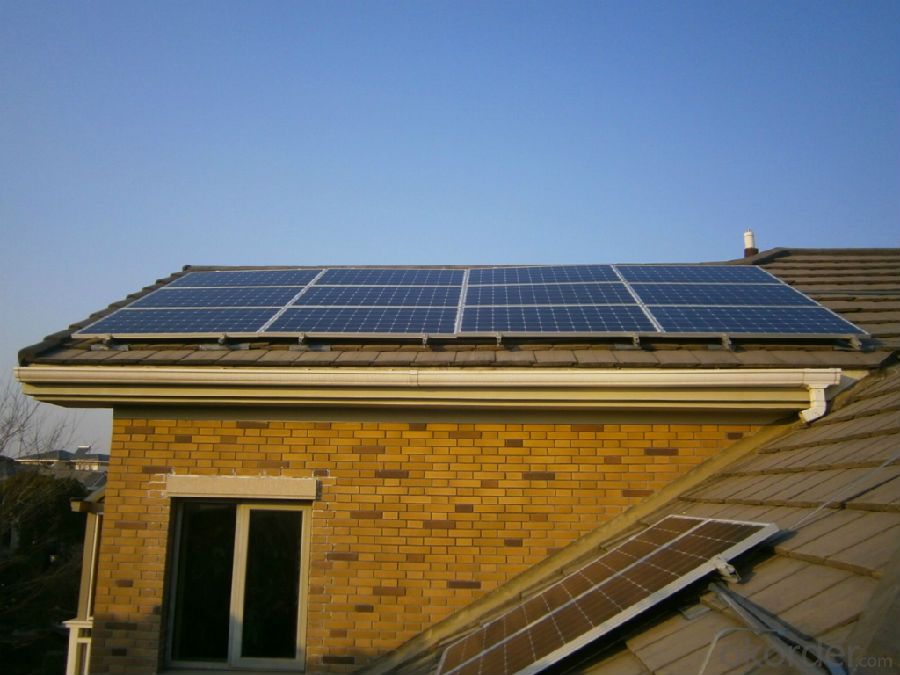

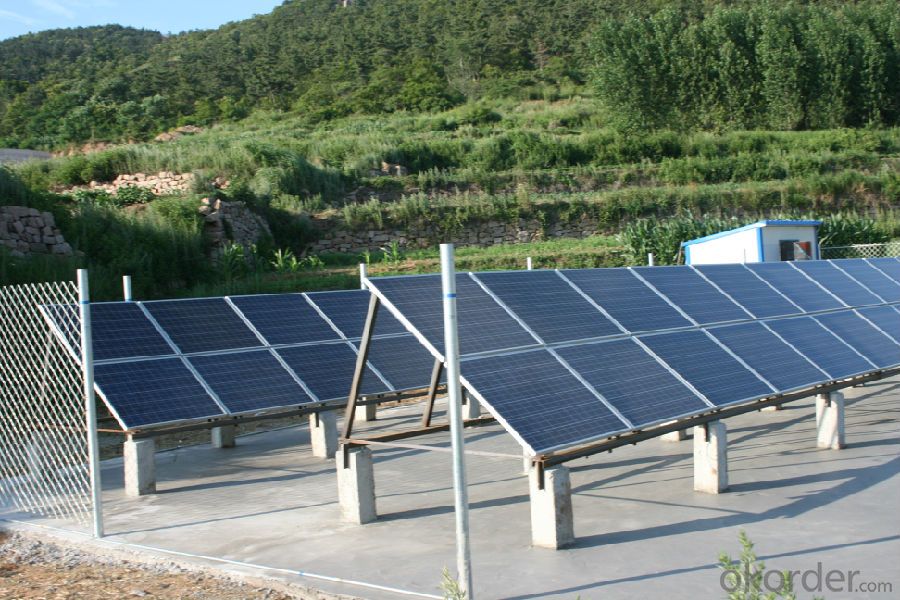
- Q: Can a solar inverter be used with solar-powered recreational vehicles (RVs)?
- Yes, a solar inverter can be used with solar-powered recreational vehicles (RVs). A solar inverter is an essential component of an RV solar power system as it converts the direct current (DC) generated by the solar panels into alternating current (AC) that can be used to power various appliances and devices in the RV. It helps optimize the energy generated by the solar panels and ensures a reliable power supply while on the move.
- Q: How is the output voltage of a solar inverter regulated?
- The output voltage of a solar inverter is regulated through a combination of voltage control algorithms and power electronics components. These algorithms continuously monitor the voltage level and adjust the inverter's operation accordingly to maintain a stable output voltage. Additionally, power electronics components like DC-DC converters and inverters are used to convert the variable DC voltage generated by the solar panels into a stable AC voltage output that matches the grid requirements.
- Q: Can a solar inverter be used with different types of tracking algorithms?
- Yes, a solar inverter can be used with different types of tracking algorithms. The primary function of a solar inverter is to convert the direct current (DC) generated by solar panels into alternating current (AC) that can be used in homes or businesses. Tracking algorithms, on the other hand, are responsible for optimizing the performance of solar panels by adjusting their orientation and tilt angles to maximize sunlight exposure. Solar inverters can integrate with various tracking algorithms to ensure efficient operation and improve energy generation.
- Q: Can a solar inverter be used with a solar-powered security camera system?
- Yes, a solar inverter can be used with a solar-powered security camera system. A solar inverter is responsible for converting the direct current (DC) produced by the solar panels into alternating current (AC) that can be used to power electrical devices. In the case of a solar-powered security camera system, the solar panels generate DC power, which is then converted by the solar inverter into AC power that can be used to operate the cameras and other components of the system.
- Q: Are solar inverters weatherproof?
- Yes, solar inverters are weatherproof. They are designed to withstand various weather conditions including rain, snow, and extreme temperatures. The enclosures of solar inverters are typically made of durable materials that provide protection against moisture and other environmental factors.
- Q: What is the maximum voltage input for a solar inverter?
- The maximum voltage input for a solar inverter typically depends on the specific model and manufacturer, but it is generally around 600 to 1000 volts for residential and commercial inverters.
- Q: How does the input voltage range affect the performance of a solar inverter?
- The input voltage range of a solar inverter directly impacts its performance. A wider input voltage range allows the inverter to adapt to various solar panel configurations and environmental conditions, maximizing the system's overall efficiency. A limited input voltage range may result in reduced efficiency and output power, as the inverter may not be able to effectively convert the varying voltages produced by the solar panels. Additionally, a wider input voltage range provides flexibility in system design and allows for the incorporation of additional solar panels in the future without the need for significant modifications.
- Q: What is the maximum power capacity of a solar inverter?
- The maximum power capacity of a solar inverter can vary depending on its specific model and design. However, typical residential solar inverters have a power capacity range of 1-10 kilowatts (kW), while commercial and industrial inverters can range from 10 kW to several megawatts (MW).
- Q: What are the key differences between a central inverter and a string inverter?
- The key differences between a central inverter and a string inverter lie in their design and functionality. A central inverter is a large, centralized unit that converts the DC electricity generated by a solar array into AC electricity. It is typically installed in a central location, such as a utility room, and is responsible for converting the power from multiple strings of panels simultaneously. On the other hand, a string inverter is a smaller unit that is installed close to the solar panels and converts the DC power from each individual string into AC power. One major difference is the level of scalability. Central inverters are typically used in larger solar installations, such as commercial or utility-scale projects, where a large number of panels are connected in parallel. They can handle high power capacities and are highly efficient. In contrast, string inverters are commonly used in smaller residential or small-scale commercial installations, where a smaller number of panels are connected in series. They offer flexibility in system design and can be easily expanded or modified. Another difference is the impact of shading or module mismatch. In a string inverter system, if one panel in a string is shaded or experiences reduced performance, it can affect the overall output of the entire string. This is because all panels in a string are connected in series, and the output is limited by the weakest performing panel. In a central inverter system, however, the impact of shading or module mismatch is minimized as each string operates independently, allowing for better performance optimization. Additionally, maintenance and monitoring differ between the two types. Central inverters are easier to access and maintain as they are typically installed in a dedicated location. They also offer advanced monitoring capabilities, allowing for centralized tracking of system performance. String inverters, being installed close to the panels, require more individual maintenance and monitoring efforts. Both central and string inverters have their own advantages and disadvantages, and the choice between them depends on factors such as project size, system design, shading conditions, and budget.
- Q: In a photovoltaic grid-connected project, the role of the inverter is to convert the voltage into AC 220V or 380V for the grid, since the transformer will raise the voltage again
- Self-use, do you mean off-grid system? Or else? Europe and Sweden side of the grid project electricity situation is also self-use? If not for their own use or spontaneous use is not used up, sent to other places electricity, you need a transformer?
Send your message to us
Solar Inverter 7.5 Kw - Grid Tied Solar Inverters for Solar On Grid
- Loading Port:
- Shekou
- Payment Terms:
- TT or LC
- Min Order Qty:
- 20 unit
- Supply Capability:
- 800000 unit/month
OKorder Service Pledge
OKorder Financial Service
Similar products
Hot products
Hot Searches
Related keywords






